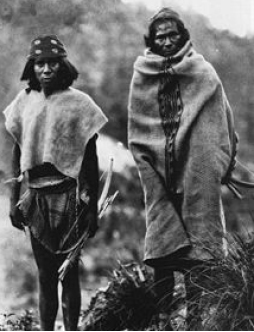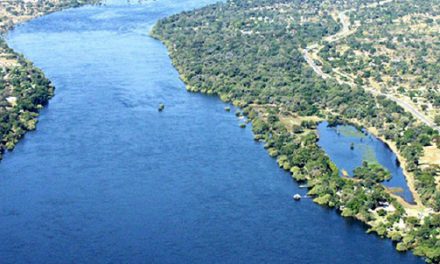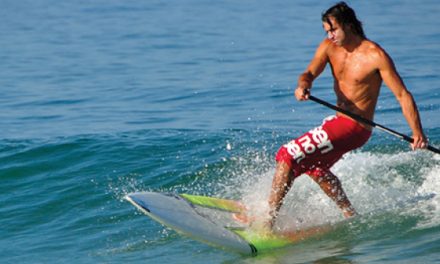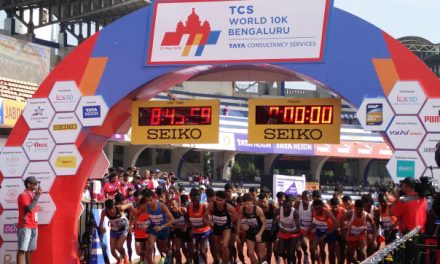
The Rarámuri Tribe – running people / foot-runner / swift of foot.

The Rarámuri Tribe – running people / foot-runner / swift of foot.
The Rarámuri or Tarahumara are a group of Indigenous people ofthe Americas living in the state of Chihuahua in Mexico. They are renowned fortheir long-distance running ability.
Nestled in northern Mexico and the canyons of the Sierra Madre Occidentalis a small tribe of indigenous people known as the Tarahumara. They callthemselves Rarámuri, loosely translated as “running people,” “foot-runner,”“swift of foot,” or “he who walks well.”
Originally inhabitants of much of Chihuahua, the Rarámuriretreated to the high sierras and canyons such as the Copper Canyon in the SierraMadre Occidental on the arrival of Spanish invaders in the 16th Century. Thearea of the Sierra Madre Occidental which they now inhabit is often called theSierra Tarahumara because of their presence.
Estimates put the population of the Rarámuri in 2006 at between50,000 and 70,000 people. Most still practice a traditional lifestyle, inhabitingnatural shelters such as caves or cliff overhangs, as well as small cabins ofwood or stone. Staple crops are corn and beans; however, many of the Rarámuristill practice transhumance, raising cattle, sheep, and goats. Almost all Rará
muri migrate in some form or another in the course of the year.
The Rarámuri language belongs to the Uto-Aztecan family.Although it is in decline u
nder pressure from Spanish, it is still widely spoken. In the language, theterm rarámuri refers specifically to the men, women are referred to as mukí(individually) and as omugí or igómale (collectively).
History
The Rarámuri are believed to be descended from a people of theMogollon culture. The Rarámuri repulsed and were never conquered by the Spanishconquistadors or fully converted by the Jesuit missionaries. When the Spanish arrivedin the 1500s, they called this native people the “Tarahumara”. By the early17th century, the Spanish had established mines in Tarahumara territory and madesome slave raids to obtain workers for the mines. Jesuit Juan Fonte establisheda mission, San Pablo Balleza, at the southern end of Tarahumara territory,expanding from missionary work with the Tepehuan to the south. The Tepehuan’sviolent resistance to Spanish incursion in the Tepehuan revolt of 1616 killedFonte and seven other Jesuit missionaries, closing the mission for over adecade.
The discovery of the mines of Parral, Chihuahua,in 1631increased Spanish presence in Tarahumara lands, bringing more slave raids and Jesuitmissionaries. Missions were established at Las Bocas, Huejotitlan, San Felipeand Satevo. In 1648, the Tarahumara waged war against the Spanish. Theygathered at Fariagic and then destroyed the mission of San Francisco de Borja.Twoof the leaders of this attack were captured by the Spanish and executed.Shortly afterward, the Spanish established Villa de Aguilar in the heart of theupper Tarahumara country.
From then on, the Tarahumara split into two groups. Those in thelower missions continuedt
o move into the general Christian population and largely lost their tribalidentity. Those in the upper areas went to war under the leadership of Tepóracaand others, driving the Jesuits and Spanish settlers from the area. The Jesuitsreturned in the 1670s and baptized thousands of Tarahumara, but these peopleretained a separate identity. Tepóraca was executed by the Spanish in 1690.From 1696 to 1698, the Tarahumara again waged war against the Spanish, but weredefeated. An important 1691 Jesuit report concerned the resistance of theTarahumara to evangelization, Historia de la tercera rebelión tarahumara.
By 1753, the Jesuits turned over the lower Tarahumara missionsto secular priests, and in 1767 the Jesuits were expelled in Spanish territories.Most missions in Tarahumara country ceased to operate or were turned over to Franciscans.Despite devoted and enthusiastic efforts, the Franciscans could not match the Jesuits’feats, and the missions declined. The Jesuits re-established the missions inthe early 20th century.
Athletic skills
The Tarahumara word for themselves, Rarámuri, means “runners onfoot” or “those who run fast” in their native tongue according to some earlyethnographers like Norwegian Carl Lumholtz, though this interpretation has notbeen fully agreed upon. With widely dispersed settlements, these peopledeveloped a tradition of long-distance running up to 200 miles (320 km) in onesession, over a period of two days through their homeland of rough canyoncountry, for inter-village communication, transportation, and hunting.
The Tarahumara’s use of huaraches, a traditional form of minimalfootwear, when running has been the subject of scientific study as well asjournalistic discourse. In his book, Born to Run, author Christopher McDougall arguesin favor of the endurance running hypothesis and the barefoot running movementbased on his time with the Tarahumara people and their running in huaraches.
The long-distance running tradition also has ceremonial andcompetitive aspects. Often, men kick wooden balls as they run in “footthrowing”, rarajipari, competitions, and women use a stick and hoop. The footthrowing races are relays where the balls are kicked by the runners and relayedto the next runner while teammates run ahead to the next relay point. Theseraces can last anywhere from a few hours to a couple of days without a break.
The Tarahumara commonly hunt with bow and arrows, but are alsoknown for their ability to run down deer and wild turkeys. Anthropologist JonathanF. Cassel describes the Tarahumaras’ hunting abilities: “the Tarahumaraliterally run the birds to death. Forced into a rapid series of takeoffs,without sufficient rest periods between, the heavy-bodied bird does not havethe strength to fly or run away from the Tarahumara hunter.
Music
Tarahumara style flute, collected by Richard W. Payne, from thecollection of Clint Goss Music and dance are highly integrated into Tarahumarasocial life. The classical pianist Romayne Wheeler writes that “Musicsanctifies the moment in the life of all the Tarahumaras,” and “All of ouractions have musical meaning.” During the end of the year cycle, theTarahumaras play violins which are masterfully carved but not varnished. The tunesare known as matachín pieces and are danced by dancers lavishly dressed incolorfulattire
resembling North African garments and accompan
ied by rattles (sáuraka). During Lent they play three-holed flutes ofriver cane, together with drums.
Food
Staple crops of the Tarahumara are maize, beans, greens, squash,and tobacco. Chilli, p
otatoes, tomatoes, and sweet potatoes appear in Mexicanized regions. Corn isplanted in February and March using oxen which are often loaned as not everyoneowns one. Corn begins to flower in August; by November it is harvested andcooked or stored. Common corn dishes are pinole, tortillas, esquiate, atole,tamales, and boiled and roasted ears. Beans are one of the Tarahumaras’ essentialprotein-rich foods and are usually served fried after being boiled. Tamales andbeans are a common food which the Tarahumara carry with them on travels. Wheatand fruits were introduced by missionaries and are a minor source of nutrition.The fruits grown by the Tarahumara include apples, apricots, figs, and oranges.
The Tarahumaras also eat meat, but this constitutes less than 5%of their diet. Most of the meats that they consume are fish, chicken, andsquirrels. On ceremonial occasions, domesticated animals such as cows, sheep,and goats are killed and eaten. The Tarahumara practice persistence hunting ofdeer and wild turkeys by following them at a steady pace for one or two daysuntil the animal drops from exhaustion.
In the award-winning documentary GOSHEN Film (2015) theTarahumara traditional diet is examined through interviews with Dr. WilliamConnors clinical dietary research expert. Their traditional diet was found tobe linked to their low incidence of diseases such as Type 2 Diabetes. However,the Tarahumaras’ health is transitioning in regions where processed goods havebegun to replace their traditional staples.
Customs
Traditional Tarahumara male dress displayed at the Museo de ArtePopular in Mexico City.
Gatherings for celebrations, races, and religious ceremonies oftentake place with tesgüinadas,a Tarahumara-style beer festival. These gatheringstake place all year around, but most happen in winter, and are the socialevents between the neighboring Tarahumara people.Tesgüinada events include rainfiestas, harvest ceremonies, curing fiestas, Guadalupe Fiesta, Holy Week,races, and Sunday gatherings.Some of these events take place during and aftercommunal activates, for example when neighbors help one another’s families withtheir fields or building large structures like granaries,houses, and corrals.The harvest and rain ceremonies take place during the farming months to ensurea good crop season. These events also require either a shaman, curandero, orchanter. The job of the shaman and curandero are purely religious, as thecurandero is there to diagnose and to heal the sick of the community, andchanters lead the tesgüinadas in chants and rhythms to accompany theceremonies.
Tesgüinadas are an important aspect of Tarahumara culture as itis often the only time when men have intercourse with their wives. They act asa social lubricant, as Tarahumara are very shy and private. Anthropologist JohnKennedy describes the institution of tesgüinada as an important social fabricto Tarahumara culture which he calls the “tesgüino network”. He also statesthat “the average Tarahumaran spends at least 100 days per year directly concernedwith tesgüino and much of this time under its influence or aftereffects.”
The religious role of tesgüino is a very important aspect totesgüinada. Before one can drink an olla of tesgüino they must dedicate it to Onorúame.During the curing ceremonies, the olla must rest in front of a cross until theceremony is over. At age 14, a boy is allowed to drink tesgüino for the firsttime after a short sermon about his manly responsibilities. These rituals cansometimes last as long as 48 hours. Tesgüinadas are usually accompanied bydancing and the playing of fiddles, flutes, drums and guitars.
Tesgüino is a fermented drink made year round from sproutedcorn. Sometimes it is also made with still-green stalks, fruits of certaincactuses, shrubs, wheat, and trees when corn is sparse. The process begins bymalting the corn and spreading it in a shallow basket covered with pine needleseach day for four or five days. It is kept moist until the corn sprouts bywhich time the starch in the corn has fermented. It is then mashed and boiledfor eight hours. Varied herbs are ground up and mixed with water into a pastewhich is then fermented overnig
ht by a fire. Then the paste is combined with the corn liquid andfermented for another three to four days. Tesgüinadas usually take place soonafter as the tesgüino can spoil within 24 hours. A&W
Source: Wikipedia












